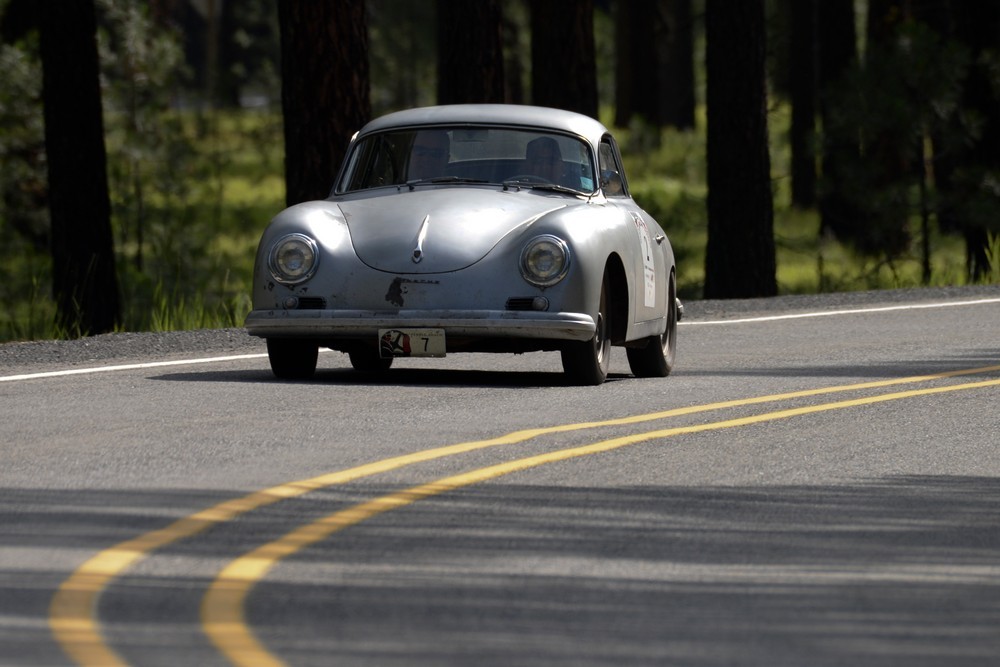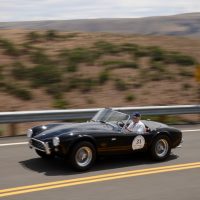
This January, if the weather allows, block out an afternoon to get behind the wheel of one of your vintage cars and just go driving. Having some friends join you in their old cars would make it even better.
Pick a destination that requires driving on some interesting roads. Even better, have a nice place to eat with a decent view as the destination.
Reflect on each of the steps below – things that you may do automatically. Don’t take them for granted this time. Savor and reflect on each one.
Pay attention as you unscrew the valve-cover caps on your tire stems. Enjoy that moment when you press your analog pressure gauge onto the valve stem and watch the little white indicator pop up. Think back to the first time you put air in your own tires, and how powerful the rush of air was when it came out of the hose.
Reflect on the familiar sound the air-compressor makes as it builds pressure in the air tank. Think how satisfying it is when you get your pressures just right, say 28 pounds in the front and 32 in the back.
If your car has an electric fuel pump, listen for the rhythmic thumps it makes as it builds pressure to the carburetors – a quick tempo at first, then slowing as pressure is achieved.
Every carbureted car starts differently. With cars that have accelerator pumps, such as Webers, you just need two or three quick pumps of the throttle to get gas into them. SUs don’t have accelerator pumps, so just holding the throttle part way down is all you need to do.
Every metal ignition key has a feel of its own. Think how familiar you are with the location of the ignition switch, on the left or right side of the steering wheel. After all of these years and insertions, you instinctively know the top side of the key.
Every analog key twists differently in the switch. The solenoid speaks with a voice of its own as it engages the starter motor. Every engine spins at a different speed and with a different sound as a car fires up.
Feel how the car runs first on one, then two, then three and finally four cylinders.
By now we all know that the best way to get a car’s fluids up to operating temperature is by putting the engine under load. Slowly letting out the mechanical clutch, you back out of the driveway, engage first gear with a snick and slowly proceed down the road, at idle speed and then faster.
Don’t take any one of these steps for granted. Your car was in a state of slumber, and you have brought it to wakefulness. You are using the skill set you have developed over the past few decades.
The rest of your day will be the magic you expected as you cruise down challenging roads.
But you have already given yourself the best present of all – you have repeated the ritual of starting your old car, in a demonstration of the relationship you have developed with it over the years.
I call that a pretty good winter day.



How about the smell of ether that it takes to get it to fire up?
Nice job Keith describing the intimate parts to get a car started and moving. All true. However, I’m still debating if it’s better to start (the normal way) or let sit, as I’ve read whereby after extended periods of sitting it’s metal on metal until oil get circulating so the more you do that the more life you take from those parts (like thousands of miles per start).
So enjoyable: both doing it, and reading about it.
Off to take my new-to-me 356 for a blast out to mountain-peak surrounded Index, Washington… spectacular backroad drive from The FOUNDry in Kirkland..
Very well said. In a couple of weeks, a good friend will visit from England. Unless roads are slick, we will drive our wives in my two Giulietta’s up Hwy 199 along the Smith River, and wine taste in the Oregon Applegate AVA, then stay overnight in a VRBO. I’ll be sure we check all your boxes Kieth.
We did exactly this on January 1st with 50 of our friends in 25 classic cars. And it is always such a nice event that involves all the senses. When I get into one of my cars, it is not only the sensation of driving them. It is the feel of seats and sitting in them, it is the very specific smells from the interiors and the engines when warmed up.
Every start up procedure is different. The gear boxes are fundamentally different and the shifting sensation is so unique to each car. The sound of every engine in every gear at various engine speeds. The rolling noise, the suspension differences. The sheet metal and how it makes you feel. Every switch feels differently, be it turning on lights, using the indicator pulling out chokes or hand throttles. Started key versus starter switch versus pressing key in versus starter lever.
Driving a car really involves all the senses all the time. And being present in the moment gives you all these little pleasures and sensations Keith is talking about.